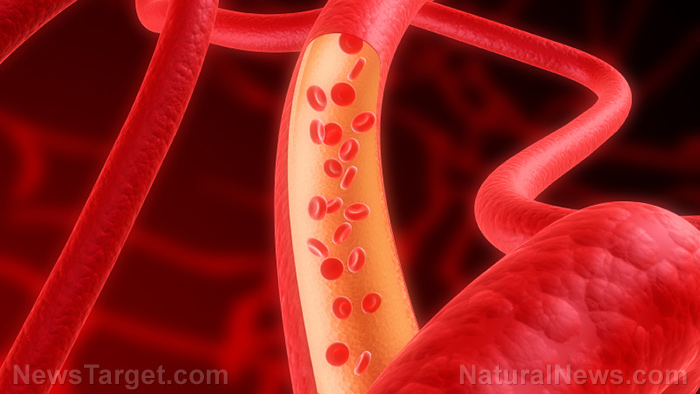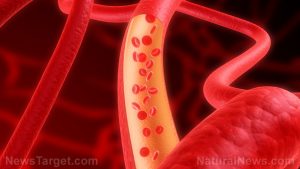
Moyamoya disease – causes, side effects and treatments at NaturalPedia.com
Tuesday, May 15, 2018 by Michelle Simmons
http://www.naturalpedia.com/moyamoya-disease-causes-side-effects-and-treatments-at-naturalpedia-com.html

Moyamoya disease is a rare, progressive cerebrovascular disorder caused by blocked arteries at the basal ganglia, which is located at the base of the brain. The name “moyamoya” means “puff of smoke” in Japanese and describes the look of the tangle of tiny vessels formed to compensate for the blockage.
The disease was first discovered in Japan in the 1960s. Since then, it has been found in individuals in other countries around the world. It is more common in Asian countries than in the countries in Europe or North America.
It can affect individuals of any age, but it is more common in children. The cause of moyamoya disease is unclear. However, about 10 percent of people suffering from Moyamoya disease have a close relative who is also affected. Because of this, researchers think that the disease may be a result of inherited genetic abnormalities.

Known side effects of moyamoya disease
Side effects of moyamoya disease are most likely to first appear with an ischemic stroke, hemorrhagic stroke, or a mini-stroke, also known as a transient ischemic attack (TIA). During an ischemic stroke or TIA, a blockage disrupts the flow of oxygen-carrying blood to the brain. Both ischemic and hemorrhagic stroke symptoms can include weakness or numbness in an arm or leg, difficulty speaking, or paralysis affecting one side of the body. Other side effects include headache, seizures, and cognitive or learning disabilities.
Body systems harmed by moyamoya disease
The body systems harmed by moyamoya disease include the nervous system and the cardiovascular system.
List of foods or nutrients that prevent Moyamoya disease
There is no information on what foods or nutrients prevent moyamoya disease. However, there are certain foods and herbs that prevent the clogging of arteries. These include garlic, psyllium, fenugreek, guggul, green tea, horny goat weed, turmeric, ginger, ginkgo, rosemary, hemp seed, peony root, butcher’s broom or bilberry, artichoke, cocoa, barley, and oat bran. Other potentially beneficial herbs for cardiovascular health include grass pollen, astragalus, flax seed, hawthorn, and sea buckthorn.
Treatments, management plans for moyamoya disease
Currently, there are no available medications that can reverse the narrowing of the arteries in moyamoya disease. The goal of treatment for moyamoya disease is reducing the risks of recurrent strokes by doing an arterial bypass or by forming a new blood supply to the affected parts of the brain. Treatment for patients suffering from long-term damage from strokes consists of physical therapy, occupational therapy, and speech therapy to help the patient regain function and cope with their disability. Surgery is commonly recommended for moyamoya disease treatment.
Where to learn more
- Eating lentils regularly could prevent the need for several medications: They nourish blood vessels and improve blood flow, pressure, circulation
- Slash your risk of stroke by 42 percent with vitamin C
- Study finds green vegetation around your residence decreases risk of death from many common diseases
- Consumption of resveratrol found to improve cerebrovascular function in people with type 2 diabetes mellitus
- Top 7 Deadliest Diseases You Should Beware Of
Summary
Moyamoya disease is a rare, progressive cerebrovascular disorder caused by blocked arteries at the basal ganglia.
Moyamoya disease causes an ischemic stroke, hemorrhagic stroke, or a mini-stroke, which in turn causes weakness or numbness in an arm or leg, difficulty speaking, or paralysis affecting one side of the body.
Moyamoya disease can be prevented with foods including garlic, psyllium, fenugreek, guggul, green tea, horny goat weed, turmeric, ginger, ginkgo, rosemary, hemp seed, peony root, butcher’s broom or bilberry, artichoke, cocoa, barley, and oat bran.
Moyamoya disease can be treated with surgery, physical therapy, occupational therapy, and speech therapy.
Sources include:
Tagged Under: Tags: Moyamoya disease





